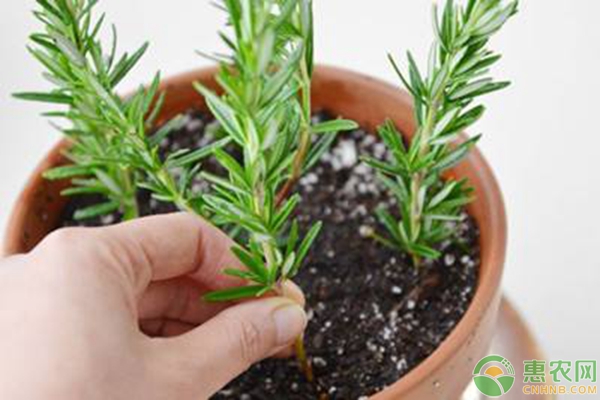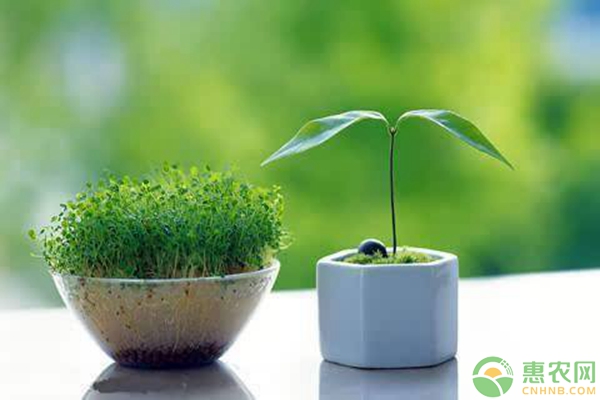How to propagate flowers by cutting?
The leaves of the plant are used for cutting treatment. If the leaves of African violets are planted in the soil or soaked in water, they can take root in the petiole. A method of cutting with a leaf bud attached to a leaf and a few stem cuttings. The stem can be cut off near the bud and grow longer under the bud, so that it can grow strongly and take root. Generally, the cuttings should be 3 cm long. Rubber trees, evergreen flowers and leaves, camellias and so on can be propagated by this method.
Hardwood cuttings: after defoliation or before sprouting in the following spring, choose the middle of the 2012 branches that are mature and robust, full in tissue and free of diseases and insect pests, cut into cuttings of about 10 cm long and 3-4 nodes, the cut mouth should be close to the internodes, and the upper end should be cut into an oblique mouth to facilitate drainage and insert into the soil.
Soft branch cuttings: cuttings with current-year twigs. Cut branches 7 to 8 cm long, cut off the lower leaves, leaving a few upper leaves, and then cuttage, such as chrysanthemum, poinsettia, geranium, begonia and so on.
Semi-hardwood cuttings: take about 8 cm of semi-mature shoots of the same year, remove the lower leaves and leave 2 upper leaves, and insert them into the soil, such as sweet-scented osmanthus, rose, etc. When the root is inserted, the larger the root is, the stronger the regeneration ability is. The root can be cut to 5-10 cm long, oblique or horizontally embedded, so that adventitious buds and fibrous roots occur, such as peony, wax plum, peony, African chrysanthemum, snow willow, persimmon, walnut, round-leaf begonia and so on.
The main management after cutting is not to see the bright light too early, shade and watering, and keep moist. Root cuttings and hardwood cuttings are relatively simple to manage, so as not to freeze them. Soft branches and semi-hard branches should be carefully managed to keep the basin ±moist to prevent water loss from affecting survival. After rooting, the irrigation is gradually reduced, the light is increased, and liquid fertilizer is applied once after the new buds grow, and the plants can only be transplanted after growing. In addition, in the process of renovation management, attention should be paid to pest control and weeding and loosening the soil.
How do flowers propagate by cutting? Detailed explanation of the basic methods of Flower Cuttage Propagation
In the last article, we talked about the striping propagation of flowers. Experienced flower friends all know that in addition to striping propagation, cutting is also a very common way of flower reproduction. Cuttings are cuttings, cutting the stems, roots, leaves and buds of flowers, and inserting them into soil or soaking in water. After taking root, they can be planted and grow into new plants, but the conditions for cutting different flowers are different. Let's take a look at the detailed explanation of the flower cutting method with the editor of Huinong Network.

1. Cutting types
There are three kinds of cuttings: leaf cuttings, stem cuttings and root cuttings, which are classified according to the maturity of cuttings and flower organs. In addition, according to the different cutting period and methods, it can also be divided into split cutting, heel cutting and so on.
(1) Leaf cutting
A flower that can be inserted into leaves, having a stout petiole, veins, or thick leaves. The leaves inserted into the leaves should be fully developed and are generally carried out in the breeding bed for the purpose of effect. Leaf cuttings are divided into whole leaf cuttings, leaf cuttings and bud cuttings.
(2) Stem cutting
There is no limit to the location, depending on the season and species, in order to survive, you can cover the plastic shed for heat preservation or shade. Stem cutting is divided into soft wood cuttings, semi-soft wood cuttings and hardwood cuttings.
(3) Root insertion
Some perennial flowers can produce adventitious buds from their roots to form young plants, which is suitable for root propagation. The roots of this kind of flowers are very thick, not less than 2mm, and the roots of the same kind of flowers are thicker and older are easy to survive. It can be carried out in early spring or late autumn, or dig up the mother plant in autumn, store the root system for the winter, and then cut again in spring next year.
2. The key to survival
In order to ensure the survival of cuttings, we must pay attention to the following key issues.
(1) selection and treatment of cuttings
The branches of cuttings should be healthy, the cuttings of young cuttings should be cut immediately after harvest, the succulent plants should be cut and hung in a ventilated place for a few days, and the cut should be dried and then cutted. in order to prevent decay, you can barbecue the incision over a low fire, or dip some freshly burnt plant ash in the cut.
(2) the temperature of cutting.
The best cutting temperature is 20: 25 ℃. Too low and too high temperature will affect growth. Therefore, if the temperature can be controlled, the four seasons can be cut. Under natural conditions, it is best to choose spring and autumn.
(3) humidity of cuttings.
The cutting substrate was kept in a moist state. And to ensure the humidity of the air, such as covering plastic film, but to be ventilated.
The above is the detailed explanation of the basic methods of flower cutting arranged by Huinong net. Have you learned it?
How do flowers propagate by cuttings? Flower cutting propagation is a propagation method which makes use of the regeneration ability of branches, leaves, buds and roots to sprout new branches and leaves and develop into an independent new plant. This method belongs to asexual reproduction. Spring and autumn is the best time for flower cutting propagation, when cutting propagation is carried out, the survival rate is very high. Although the temperature and humidity are different in different regions, cuttings can be carried out as long as the temperature is between 13 and 25 ℃. Tropical xerophytes, such as cacti, can be cut at higher temperatures. Flower cutting is roughly divided into two types: one is soft wood cutting, that is, semi-lignified branches in the growth period are used as cutting materials; the other is hardwood cutting, that is, the techniques, buds and roots from falling leaves in autumn to sprouting in spring are used as cutting materials. As soft wood cuttings can be carried out all the year round, people often use them. In soft wood cutting, the cuttings of chrysanthemum, a bunch of red, glass begonia, dahlia and other herbaceous flowers should be selected for the hardened shoots of the current year. For the cuttings of woody flowers such as rose, cloves, strangers, rhododendron, bell, mulberry, pomegranate and other woody flowers, the woody or semi-lignified branches of the current year should be selected, and it is best to adopt the semi-woody cuttings at the lower end of the proximal tip after flowering. The specific method of cutting propagation is to first select the techniques for growing and enriching without diseases and insect pests, each section is 5-10 cm long, and there are about 4-6 leaf nodes. Then the leaf node at the lower end of the branch is 2-3 cm. Cut a Mal-shaped incision to increase the nutrient absorption area, and cut off the leaves on the cuttings, leaving only one or two leaves at the top. The sap will flow from the cuttings of some plants, such as bamboo cuttings, poinsettias, cacti and other succulent plants, which need to wait for the wound to dry and heal before cutting, otherwise the cut will rot soon after cutting. Other flowers and trees should generally be cut and inserted to keep them fresh. If there are conditions, the cuttings can be dipped in vitamin B solution, taken out and inserted into the soil for two minutes to promote wound healing and rooting. In general, the cuttings are inserted into clean river sand. But practice has proved that using sapphire powder (also known as Shangshui stone, which is a natural mixture of aluminum and magnesium, with a thin flake like mica-like mineral) as a slotting machine has the best effect, because it has a variety of trace elements and good ventilation, and can maintain a certain amount of water. the cuttings can take root quickly and the survival rate is higher. The depth of cutting is 2/3 of cuttings in spring and autumn and 1/2 in summer. If you can illuminate the inserting bed with light at night, it is more conducive to cuttings rooting ahead of time and improve the survival rate.
- Prev

How to sow and reproduce flowers?
Most of the sowing time is in spring and autumn, usually from February to April and from August to October in autumn. Annual flowers are mostly carried out from April to May in spring, and biennial flowers are mostly carried out from August to September in autumn. Most families use pot sowing, and if possible, they can also sow in the open field, on demand or strip sowing, and transplant after emergence.
- Next

How to strip and reproduce flowers?
Striping propagation is to peel the flower plant as a part of the mother plant, then pile soil or press the soil on the stem, cut it from the mother after rooting, and then plant it to become an independent plant. Choose the mature and robust branches with full buds on the matrix to act as
Related
- Fuxing push coffee new agricultural production and marketing class: lack of small-scale processing plants
- Jujube rice field leisure farm deep ploughing Yilan for five years to create a space for organic food and play
- Nongyu Farm-A trial of organic papaya for brave women with advanced technology
- Four points for attention in the prevention and control of diseases and insect pests of edible fungi
- How to add nutrient solution to Edible Fungi
- Is there any good way to control edible fungus mites?
- Open Inoculation Technology of Edible Fungi
- Is there any clever way to use fertilizer for edible fungus in winter?
- What agents are used to kill the pathogens of edible fungi in the mushroom shed?
- Rapid drying of Edible Fungi

